5.1- My computer tricked me!
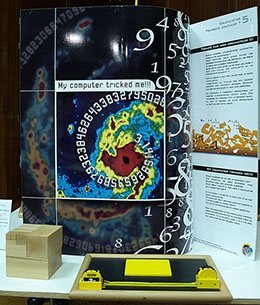
Which numbers do we use in everyday life?
For counting, we used integers, then decimals, real and complex numbers.
What about today? If one uses a calculator or a computer?
At the market, it is better to know how to do fast mental calculations.
The computer itself uses only decimals numbers to a limited number of decimal points.
The laws of mathematics are no longer respected.
From the bookkeeper to the aeronautical engineer, errors of approximation must be mastered, from the infinitesimal to the infinitely large. It is in this area that computers are not reliable tools.
Experience on table
Hands-On Calculating
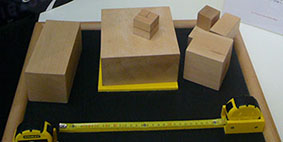
With the two tape measures, try to find the sum:
1 + 2 + 3 + 4 + 5 + … + 20 (or 30 or ••• n)
With the wooden blocs, try to find the limit of the sum:
1/2 + 1/4 + 1/8 + 1/16 + 1/32 + … = ?
To remember
The question you asked relates back to a famous mathematician, Gauss (1777–1855).
When he was eight, in elementary school, was asked him to find the sum of the numbers from 1 to 100.
Gauss noticed that if he splits the numbers into two groups (1 to 50 and 51 to 100), he could add them together to get always a sum of 101: 1 – 100 = 101, 2 + 99 = 101, 3 + 98 = 101 and so on….
Idea & Realisation: Gauss... & Centre•Sciences
5.2- Secure, @-commerce?
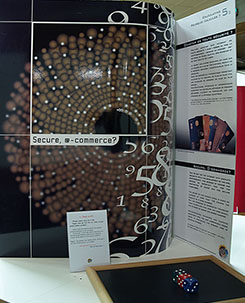
Can we buy on the Internet with complete security?
With the development of the web, cryptography -the science of coding- has become an important tool for the protection of banks and for on-line purchases.
The secret of our cheque cards is based on numbers of more than 100 figures, the product of 2 prime numbers*.
But the progress of information technology today allows one to find, more and more quickly, the divisors of larger and larger numbers!
Mathematicians, physicists and computer scientists look for new unbreakable codes, using, in particular, the strange laws of quantum physics.
* An integer is "prime" if it has only 2 divisors: 1 and itself. The first are: 2, 3 ,5 ,7 ,11 ,13,17,19...
Experience on table
Play 421
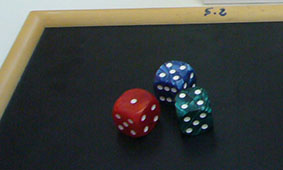
Each player throws these 3 dices.
The winner is the one who gets 4-2-1 or,
else, the largest prime number*.
To remember
In the list of integers, the prime numbers seem to arrive randomly.
And nevertheless, there is an infinity, but the more we go towards large numbers, the less we have of luck to find such a number. We say that they rarefy.
The primes are the building blocks of the positive integers: every positive integer is a product of prime numbers in one and only one way, except for the order of the factors.
* Un primo es cualquier número entero, distinto que 1, que sólo es divisible por 1 y por sí mismo.
Idea & Realisation: Centre•Sciences
5.3- Denoising in Corfou
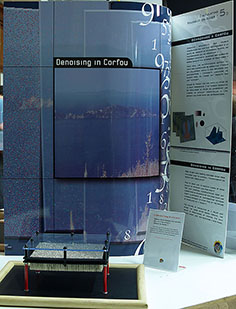
How do you recover digital images which were damaged due to camera, transmission or reception problems?
How do you send and receive images of good quality by high-speed Internet?
For that purpose, mathematicians introduce algorithms for noise removal which are easily illustrated by cartographer methods: the luminous intensity of every pixel of the image is translated into a “height”.
The image is translated into a relief map, the noise causing a rough surface. The relief is then regularized keeping the main “level lines" and one recovers a nice image.
Experience on table
Denoising your Hand’s Image
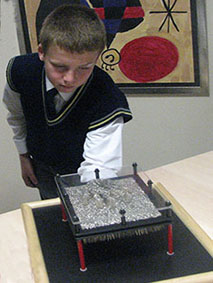
Lift the pins’ screen with one hand.
Where are the mistakes?
How to elimitate them?
To remember
To find errors in the image and get ride of them, the mathematicians use « aujourd’hui » methods and algorithms inspired by the cartographers.
We find them in computing tools today such as Photoshop.
The smoothing smooths edges carved of a selection by softening the transition of color between the pixels of the edge and those of the background.
* To know more, read the panel
Idea & Realisation: Georges Koepfer (Paris) & Centre•Sciences
© Photos: Jennifer Plantier, Lyon Museum
